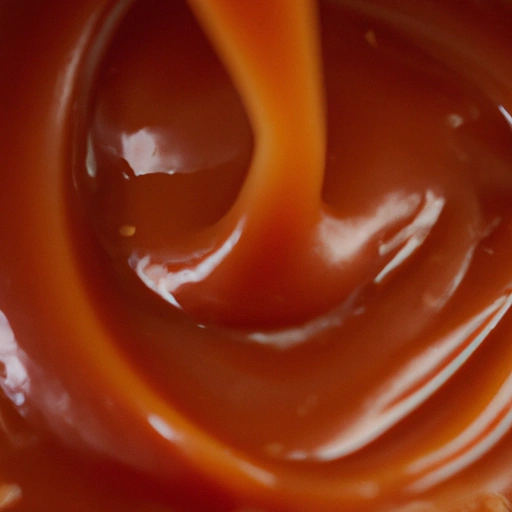Caramel Sauce
Description

Caramel sauce is a delectable, sweet concoction made by cooking sugar until it browns and becomes a richly flavored syrup. It's a versatile ingredient that can enhance a wide variety of dishes, from desserts to savory recipes. Caramel sauce is typically made by heating sugar, butter, cream, and occasionally vanilla or salt, until the sugar dissolves and the mixture reaches a golden-brown hue. This process, known as caramelization, unlocks deep, complex flavors that are both sweet and slightly bitter. Caramel sauce can be used in both hot and cold applications and is often drizzled over pastries, fruits, ice cream, and many other dishes.
Common uses
Caramel sauce is frequently used as a topping or ingredient in a variety of sweet treats. It's commonly drizzled over desserts like ice cream, cakes, and puddings. It's also used to flavor beverages like coffee, hot chocolate, and cocktails. In some culinary traditions, caramel sauce is used as a glaze for meats or to add a sweet note to savory dishes.
Nutritional value
Calories
A typical serving of caramel sauce (1 tablespoon or about 19 grams) contains approximately 103 calories (432 kJ).
Protein
Caramel sauce is low in protein, with less than 1 gram per serving.
Fat
The fat content in caramel sauce is approximately 5.5 grams per serving, primarily from butter or cream.
Carbohydrates
The majority of caramel sauce's calories come from carbohydrates, with about 15 grams per serving, mostly in the form of sugars.
Vitamins
Caramel sauce contains small amounts of vitamins, such as vitamin A from the butter or cream.
Minerals
There are trace minerals in caramel sauce, including calcium and potassium.
Health benefits
Caramel sauce is a high-energy food that provides quick-release sugars, making it a potential source of instant energy. However, it should be consumed in moderation due to its high sugar and calorie content.
Potential risks
Excessive consumption of caramel sauce can contribute to weight gain, dental cavities, and blood sugar spikes, especially in individuals with diabetes. Some caramel sauces may contain additives or allergens like dairy, so it's important to check labels for potential sensitivities.
Common recipes
Caramel sauce is a staple in recipes such as flan, crème caramel, caramel apple pie, and banoffee pie. It's also a key ingredient in dulce de leche and millionaire's shortbread.
Cooking methods
To make caramel sauce, sugar is heated slowly to 340°F (170°C) until it melts and becomes amber in color. Then, butter and heavy cream are carefully mixed in to create a smooth, rich sauce.
Pairing with other ingredients
The rich sweetness of caramel sauce pairs well with the tartness of fruit, the creaminess of dairy products, and the robust flavors of coffee and chocolate. It can also complement the saltiness of nuts and pretzels or the savory notes of roasted meats.
Summary
Caramel sauce is a beloved ingredient that can transform simple dishes into indulgent treats. Its rich flavor and velvety texture make it a favorite in desserts and beyond. When used judiciously, it can add depth and sweetness to a wide range of culinary creations.